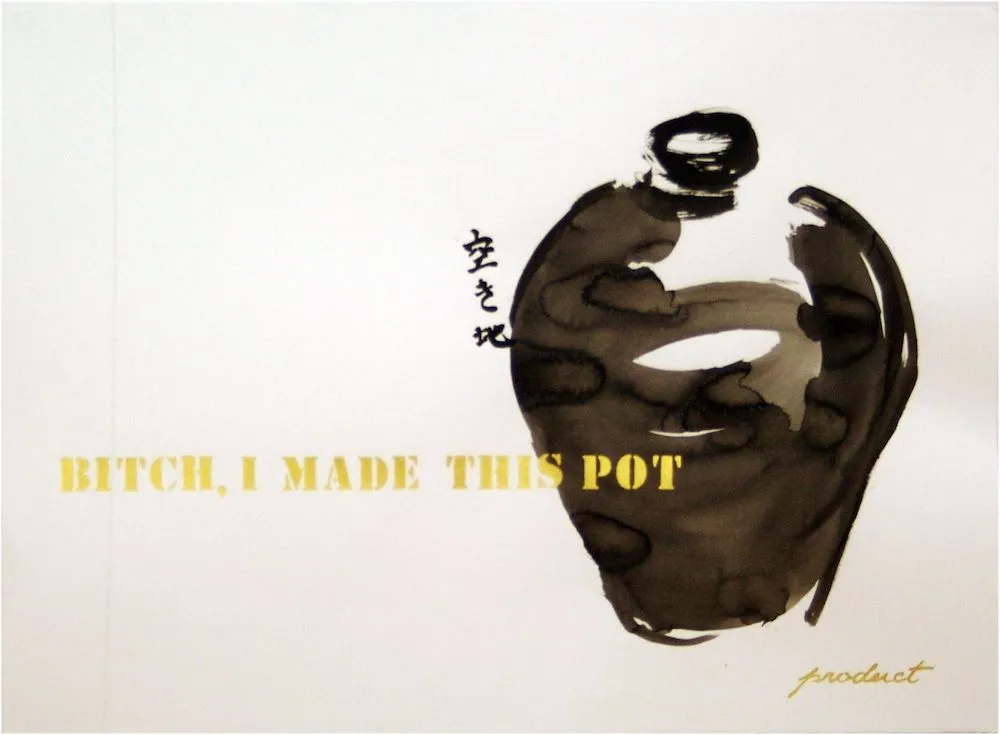
The Arthur Jafa – Theaster Gates conversation in Tank 96 led me to much more Gates content, including this fascinating discussion by Gates, Yuko Kikuchi, and Hiroki Yamamoto, about mingei, the intersectionally problematic folk art aesthetic of Japan conjured in the early 20th century by Soetsu Yanagi. [The Gates hype was in anticipation of his show, Afro-mingei, which opened at the Mori Art Museum yesterday.]
Despite mingei‘s origins as nationalist propaganda, and its “double Orientalist” emphasis of primitivism while appropriating Korean ceramic traditions, and its gender-biased gatekeeping that continues a century later, Gates et al still manage to make aesthetic and cultural meaning from engaging with it. And that problematic faving paradigm comes in handy.
Afro-mingei is Gates’ term for the resonance he finds between the deeply rooted ceramic traditions he studied in Tokoname and the cultural practices of his own Black American context. It feels like more fully conceptualized way for Gates to make sense of his own artistic practice as it relates to his identity and his community—or rather, his identities and communities.
Nothing I can find on Tank makes mention of Gates’ adoption in 2007 of the persona of a fictionalized Japanese ceramicist, Shoji Yamaguchi. [The Mori does mention Yamaguchi in their explanation of Afro-mingei.] Elspeth Michaels has probably the most constructive, upbeat rumination on Gates/Yamaguchi, as a fabricated mentorship and inspiration in a ceramics field where both were sorely lacking.
I’ve never been able to be chill about the Yamaguchi thing since first learning about it in 2014, in the middle of the Donelle Woolford/Joe Scanlan mess at Michelle Grabner’s Whitney Biennial. That same year, Gates gave a keynote performance/speech at NCECA, the big ceramics teachers conference where he talks powerfully about a lot, but especially his experience as a Black potter. Beside or after Yamaguchi, Gates talked about identifying with Dave Drake, a 19th century potter in South Carolina who incised his name and poems on the pots he made while enslaved, and after he became free. Dave was the focus of To Speculate Darkly, a two-person show Gates organized at the Milwaukee Art Museum in 2010. [The painting at the top of this post is from this show, an imagined clapback to ceramics historians who, with casual disparagement, referred to the potter as “Dave the Slave.”]
Gates sounded a little edgier in the opening night lecture for that show, titled To Speculate Darkly. He called out Leonard Todd, the biographer of Dave, for “imagining” aspects of Dave’s life when no historical sources existed. Such a process sounded a lot like Saidiya Hartman’s “critical fabulation,” which is celebrated for filling in the histories that have been omitted or erased from the archive. It’s a practice that operates differently, Gates asserts, in his hands, vs those of a writer who discovers he is a descendant of Dave’s enslavers.
But this was all 10, 14, or 17 years ago now, depending on which racially problematic situation we’re talking about, and Gates and the world have changed a lot. I think one of Gates’ superpowers, or something he’s developed as part of his practice over the many years, is how to analyze and leverage complicated and inequitable systems to make something unexpectedly good, beautiful, and transformative. And it’s become less and less unexpected every time he’s managed to pull it off.
Afro-mingei [tank.tv]
Theaster Gates vs. The Gatekeepers [thedrip]
Theaster Gates: Afro-Mingei, 24 Apr – 01 Sept 2024 [mori.art.museum]
